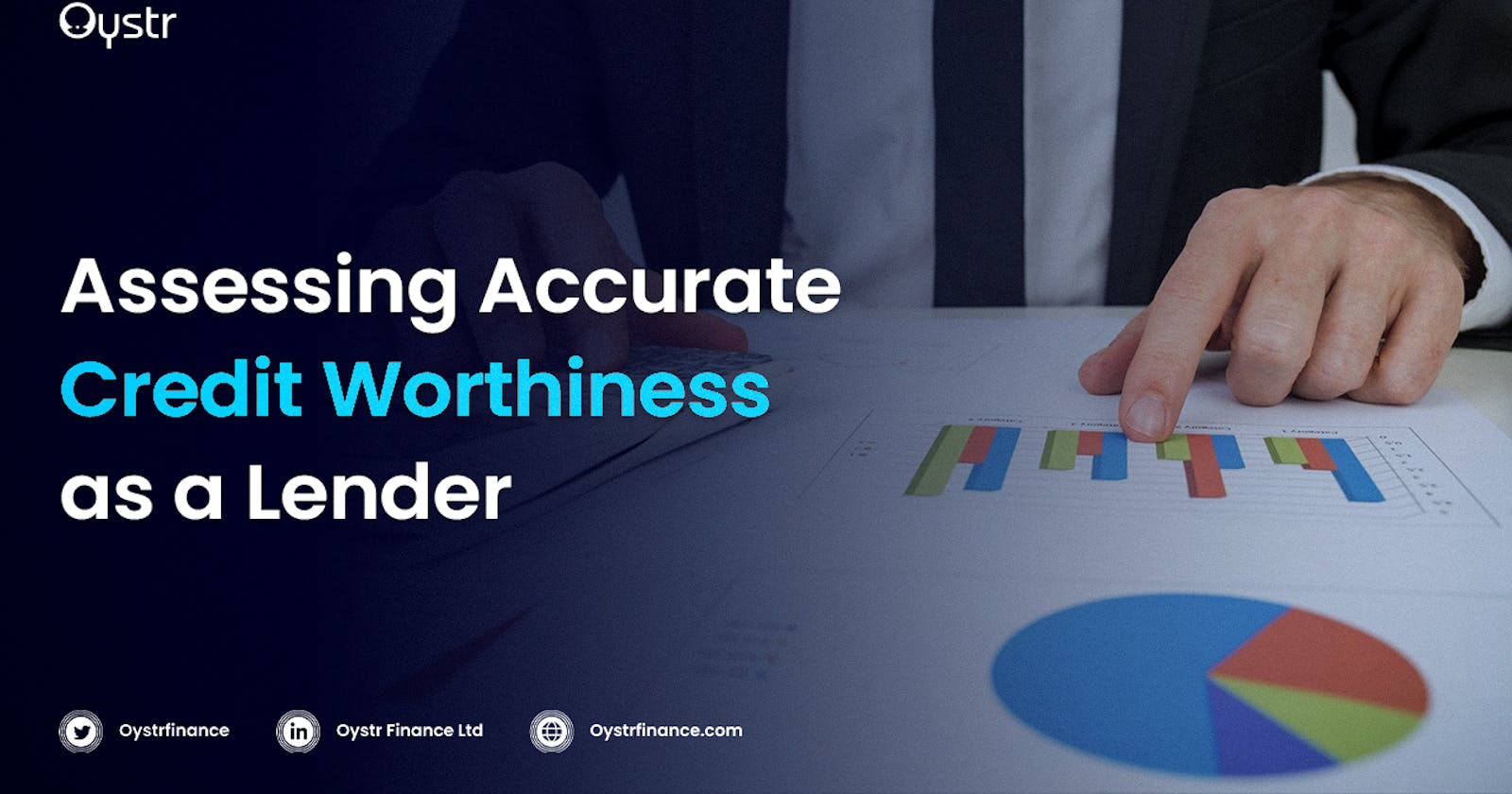Creditworthiness shows lenders' confidence in borrowers' ability to meet financial obligations. A creditworthy borrower will return the loan under the terms stipulated.
In establishing a borrower's creditworthiness, numerous aspects are considered, including but not limited to their payment history, current debt levels, and ability to make monthly payments.
By adequately assessing a borrower's creditworthiness, lenders can make better decisions in loan offers and experience lesser lending risk. Before now, a considerable part of credit risk assessment relied on traditional data, including bank statements, assets, etc. However, the financial industry has evolved to the use of alternative data. With this data, lenders can get a much more accurate and comprehensive view of customers' financial life.
In this article, we'll discuss how lenders can properly assess their customer's creditworthiness to enable faster disbursement of loans with mitigated risk.

Factors that Determine Customer's Creditworthiness
Several factors influence a borrower's creditworthiness, including the payment history and length of time spent paying off loans, credit card balances, and more.
A typical credit score contains information about customers' outstanding commitments and accounts they have paid off or canceled during the past ten years. In addition, account balances and whether monthly payments are current, 30, 60, or 90 days late are indicated. Accounts that have been sent to collections, repossessions, foreclosures, and bankruptcies will also be noted.
The FICO® Score and the VantageScore® are two examples of credit scoring systems that use an individual's credit history to produce a statistical estimate of that individual's likelihood of loan default. The probability of loan default is forecasted and reduced to a three-digit score, often ranging from 300 to 850. (though other numerical scales are occasionally used). A better credit score implies to lenders that the customer is more reliable.
The following factors will probably be taken into account while evaluating a borrower's financial stability:
- The level of inspection exercised by lenders varies by product category and loan size.
- Evidence of consistent income, such as a pay stub or tax return.
- Borrower's monthly income,
- Debt payments
- Housing expenditures.
- Savings
- Real estate holdings,
- Investments, and
- Other financial assets in lieu of or in addition to your steady income
Although these forms of traditional data show a borrower's ability to repay a loan, they don't entirely reveal the current financial status of an applicant. For instance, an applicant who just lost their job may still have a high credit score, even though their ability to repay a loan is lowered. Therefore, using alternative and traditional data is the best bet to discover a customer's creditworthiness.

What is Alternative Credit Data?
Big data, including alternative credit data, refers to information that is not directly related to a client's credit behavior but is of considerable worth. Alternative client data can be collected from various non-traditional data sources, such as digital platforms, which can provide information on consumer behaviors for credit risk assessment.
Credit risk management models may include alternative data in the generation of credit scores and the assurance of a customer's creditworthiness before extending credit.
Alternative data sources include utility, rental, insurance, and other bill payment history, social media activity, employment history, travel history, e-commerce, government, and property records.
To be utilized for credit risk analysis, the collected data must reflect the loanee's habits, preferences, conduct, and character, which is one of the five C's of credit risk (the others being capacity, condition, capital, and collateral).
Additionally, it is essential to ensure that the borrower cannot modify the information. This provides a comprehensive evaluation of the borrower's financial status and credit risk.

Credit Risk Assessment and Alternative Data
Although the traditional approach to risk assessment is useful, there will always be dangers in the loan sector. Modern credit risk analysis is enhanced by the alternative data system's emphasis on borrowers' behavior and its capacity to find data items that conventional data may have overlooked. By complementing traditional credit reports with alternative data, lenders can achieve great precision in risk assessments.
As general market practices have evolved over the past several years, lenders' reliance on user-specific information outside the standard credit report to make more informed lending decisions has increased. According to Experian, 69% of lenders made loan decisions based on factors other than credit scores in 2019.
Alternative data provide a full view of a borrower's creditworthiness than typical credit ratings. As a result, financiers might broaden their views and identify attractive credit prospects that were previously unrealized. Using AI and machine learning technology, alternative data can be converted into trustworthy credit scores. You can then have both alternative and traditional credit scores of all applicants to enable you to make smarter lending decisions.
Final Notes
A vast array of non-traditional data can prove a borrower's creditworthiness; nevertheless, the sources and types of data employed in credit risk analysis are entirely the creditor's choice. Oystr Finance is an alternative data provider that helps lenders and financial institutions assess customers' creditworthiness. Additionally, we help speed up the loan origination process and aid the timely disbursement of loans with mitigated risk.
Want to learn more? Visit our website today!

